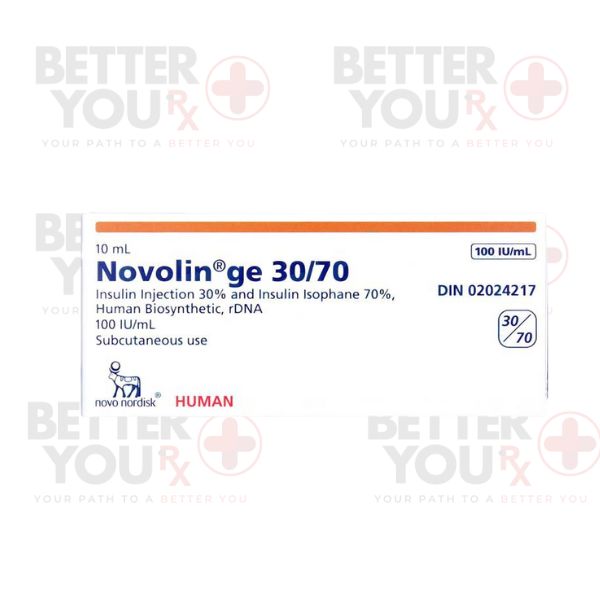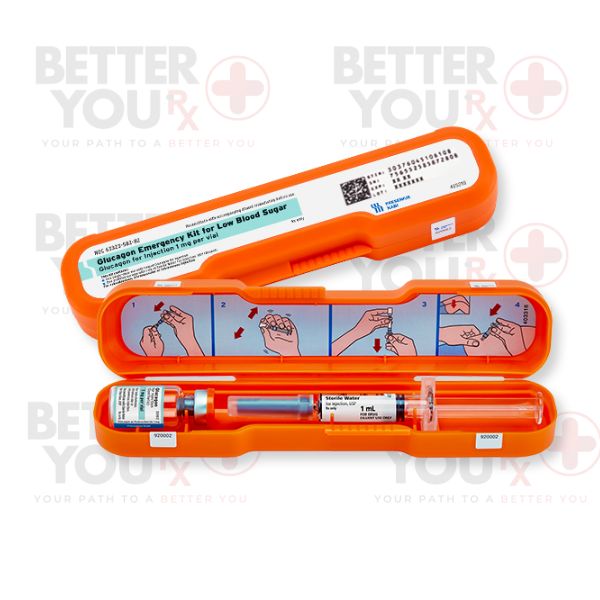| Usage |
Usage
-Tresiba is administered once daily via a subcutaneous injection, at any convenient time. If adults skip a dose, they should take it during their awake hours and then resume the regular schedule. Children should inject Tresiba consistently at the same time every day. If a dose is forgotten, they should consult their physician and carefully monitor blood glucose until the subsequent dose. For adults, there should be a minimum 8-hour gap between successive injections, and any dose adjustments should occur 3-4 days after the previous one. Importantly, Tresiba's sodium content is negligible, with less than one mmol (23 mg) per dose, essentially making it sodium-free.
|
| Side Effects |
Side Effects
While every medication has potential side effects, insulin reactions can vary in severity. Most side effects resolve within days to weeks.
Hypoglycemia (Low Blood Sugar):
• Common with insulin, affecting about 1 in 10 people. If untreated, it can escalate.
• Symptoms include headaches, rapid heartbeat, cold sweats, pale skin, nausea, fatigue, confusion, anxiety, tremors, hunger, blurred vision, etc.
• Immediately counteract with glucose tablets, sugary snacks, or beverages.
• If it drops critically, patients may faint, necessitating a glucagon injection since they cannot consume sugar.
• Ensure those around you are informed about your diabetes and understand the steps if you faint from hypoglycemia:
• Lay you on your side.
• Seek medical aid at once.
• Avoid offering food or beverages.
• On regaining consciousness, have a sugary snack or drink. If you don't, it's crucial to get to a hospital.
• Severe untreated hypoglycemia can lead to complications like brain damage or even death. It may arise from excessive alcohol, over-exercising, under-eating, or meal-skipping.
• Regularly discuss any hypoglycemic episodes or glucagon use with your doctor. Adjustments might be needed in insulin timings, diet, or exercise.
Hyperglycemia (High Blood Sugar):
• Possible causes: eating excessively, reduced activity, drinking alcohol, infections/fevers, inadequate insulin, skipping doses, or halting insulin without consultation.
• Symptoms encompass flushed skin, fatigue, thirst, reduced appetite, nausea, frequent urination, dry mouth, distinct breath odor, and parched skin.
• This can progress to ketoacidosis, a dangerous acid buildup resulting from the body metabolizing fat over sugar. Untreated, it might culminate in diabetic coma or death.
• In hyperglycemia cases, promptly check blood sugar and ketone levels and seek medical intervention.
Any unmentioned side effects should be reported to healthcare professionals. Highlighting these side effects enhances medicinal safety protocols. This isn't a comprehensive account; always converse with your healthcare provider about possible side effects and be vigilant for atypical symptoms.
|
| Storage |
Storage
Keep the medication beyond the reach of children and pets. Do not use Tresiba FlexTouch pens past the expiration date indicated on the packaging.
Before Initial Use:
• Place the Tresiba FlexTouch pens in a refrigerator, maintaining a temperature between 36°F to 46°F. Ensure the pen cap is secured to shield it from direct light and prevent freezing.
After Opening or When Carrying as Backup:
• Tresiba FlexTouch pens can be carried conveniently. Store them away from direct light, ensuring they're kept at room temperature, ideally below 86°F. If refrigerated, the temperature should be between 36°F to 46°F. They remain effective for up to 8 weeks (56 days) post-opening.
• Always keep the cap secured on the pen when not being utilized, protecting it from direct sunlight.
For environmental safety, avoid discarding the medication in regular trash or down drains. Consult your pharmacist on the appropriate disposal method for unused medicines.
|
| Warning and Precautions |
Warning and Precautions
Before starting Tresiba, it's essential to speak with your doctor and be mindful of the following:
1. Hypoglycemia (low blood glucose): Follow your doctor’s advice promptly if you detect low blood sugar levels.
2. Hyperglycemia (high blood glucose): Take action as per your physician's guidelines if blood sugar levels surge.
3. Changing Insulins: Transitioning between different insulin types or brands might require dose adjustments.
4. Insulin Verification: Confirm you're using the right insulin. It's easy to confuse Tresiba FlexTouch with Fiasp FlexTouch or NovoLog FlexTouch, so always double-check.
5. Eye Concerns: Rapid stabilization of blood sugar can potentially induce issues like diabetic retinopathy. Alert your doctor to any visual disturbances.
6. Diabetic Ketoacidosis: Tresiba isn't suitable for this condition.
7. Allergies: Do not use Tresiba if you're allergic to insulin degludec or any of its components.
8. Injection Sites: Regularly alternate your injection spots to prevent skin conditions, like lump formation or skin thickening. If injected into problematic skin zones, it could impact Tresiba's efficiency. Your physician may advise enhanced blood sugar monitoring, dose modifications, or other diabetes medications, such as Ozempic or Saxenda.
9. Medication Overview: Disclose all medications you’re on to your doctor.
10. Suitable for Children: Tresiba is approved for children above 1 year and teenagers.
11. Potential Hypoglycemia Inducers: Drugs like other diabetes treatments, sulfonamides, anabolic steroids, beta-blockers, mild fevers, MAO inhibitors, ACE inhibitors, and acetylsalicylic acid can trigger low blood sugar.
12. Alcohol Consumption: Alcohol can swing blood sugar levels, demanding possible insulin treatment alterations. Monitor your levels closely if you drink.
13. Focus and Safety: Low blood sugar might impair concentration, posing risks while driving or operating machinery.
Always stay vigilant and work closely with your healthcare professional for optimal diabetes management.
|









